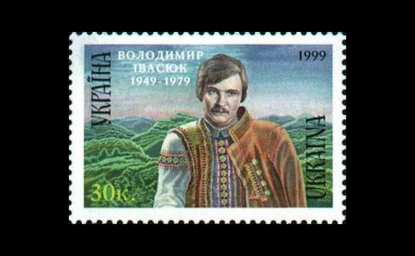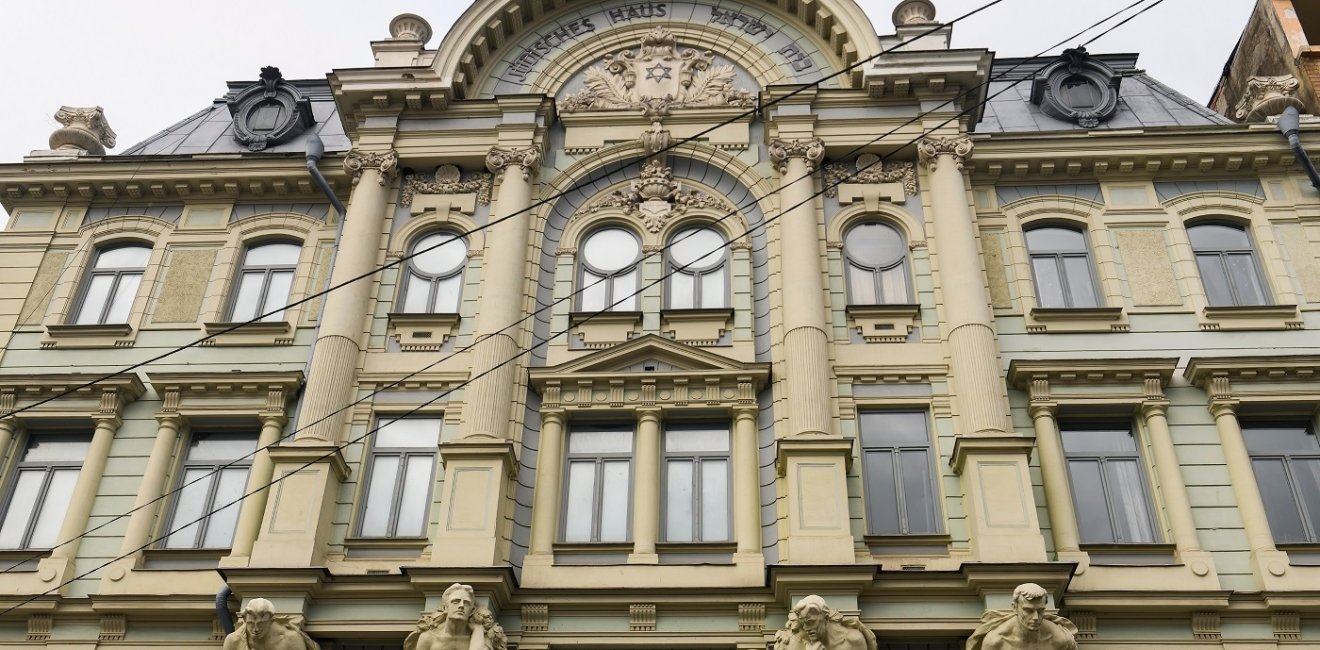
A blog of the Kennan Institute
March was a time of turmoil for those who identify as being both Ukrainian and Jewish. The war with Russia in Ukraine and the ongoing fighting in the Middle East heightened passions around what it means to be either. Or both. An exhibit in Chernivtsi, “The Light of Jerusalem,” embraces the city’s Jewish past as part of its present.
Throughout the month, hundreds of viewers made their way to that city’s Vernissage Centre of Culture to visit an exhibition of paintings and modern graphics by established Ukrainian artist Natalia Korobova. Speaking at the opening reception, Chief Rabbi Menachem Mendel Glitzenstein congratulated the artist on combining “material mastery” of technique with penetrating spirituality.
As noted in previous posts (May 4, 2022, and July 7, 2023), Chernivtsi—formerly known as Czernowitz—has long been at the center of the region’s conflicting identities. Romanian, Russian, German, Polish, and Ukrainian forces fought over the city with the collapse of the Hapsburg Empire following World War I. Ceded to Romania during the interwar period, the city became a focal point of Jewish intellectual life. Tragically, more than half of the region’s Jewish population perished in the Holocaust. Soviet authorities largely ignored this Jewish history, putting various Jewish religious and community buildings to secular use. Post-independence cultural institutions, including the Vernissage Centre, have highlighted the region’s Jewish cultural heritage through exhibitions such as Korobova’s, as well as lectures, concerts, and various performances celebrating Jewish holidays.
Korobova has enjoyed a varied and successful career for more than 50 years. The daughter of the well-known Zaporizhzhia landscape and figurative painter Vladimir Korobov, she exhibited around the Soviet Union and abroad during the 1970s and 1980s. She took a break from painting to work as a clown. With Ukrainian independence, she worked as a magazine editor and collaborated with the Zaporizhzhia publisher Wild Field, gaining recognition as an illustrator. If she became known as a successful portrait painter early in her career, over the past quarter century her work has connected realism with lyricism.
As Rabbi Glitzenstein noted at the exhibition’s opening, her watercolors and oil paintings—including landscapes, cityscapes, and portraits exploring the special light of Jerusalem—blend her fascination with physical detail and metaphysical wonderment. Their bright gracefulness lifts viewers out of the present moment, making the exhibit an antidote to the travails of war.
An exhibition of Ukrainian Easter traditions followed Korobkova’s show. Master musicians and dance students joined in concert to celebrate the long-anticipated arrival of spring. Another show, a few weeks later, showed the works of 40 children in different styles and disciplines. Each new show puts a spotlight on another aspect of the region’s complex multicultural heritage and its present. Together, they draw on what is positive from the past to point to a future of creativity.
Chernivtsi’s Vernissage Cultural Center has opened its doors throughout the current war with Russia to convene community groups through the arts. The center’s concerts, dance performances, and art exhibitions have offered respite from the strains of war. They have embraced the multiplicity of identities that have shaped the region’s tragic history. Located at the crossroads of Europe’s heart of twentieth century darkness, the city has experienced multiple horrors: more than a century of war, ethnic cleansing, religious intolerance, and political divides.
The opinions expressed in this article are those solely of the author and do not reflect the views of the Kennan Institute.
Author

Former Wilson Center Vice President for Programs (2014-2017); Director of the Comparative Urban Studies Program/Urban Sustainability Laboratory (1992-2017); Director of the Kennan Institute for Advanced Russian Studies (1989-2012) and Director of the Program on Global Sustainability and Resilience (2012-2014)

Kennan Institute
The Kennan Institute is the premier US center for advanced research on Eurasia and the oldest and largest regional program at the Woodrow Wilson International Center for Scholars. The Kennan Institute is committed to improving American understanding of Russia, Ukraine, Central Asia, the South Caucasus, and the surrounding region through research and exchange. Read more

Explore More in Focus Ukraine
Browse Focus Ukraine
Talking to the Dead to Heal the Living

Ukrainian Issue in Polish Elections




